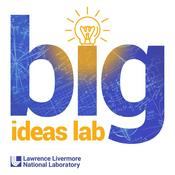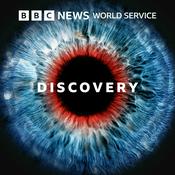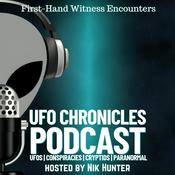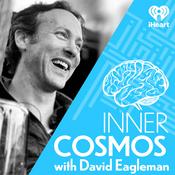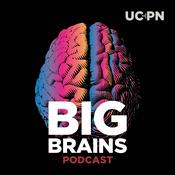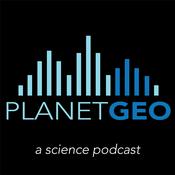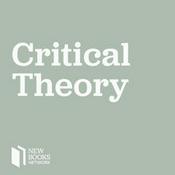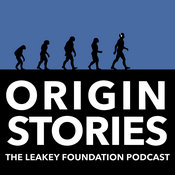Available Episodes
5 of 1084
- Uranus Unveiled: Decoding the Mystery of Radiation Belts and Martian River SystemsIn this episode of SpaceTime, we tackle some of the most intriguing cosmic mysteries and discoveries that could reshape our understanding of the universe.Unraveling Uranus: The Mystery of Its Radiation BeltsFor 39 years, the intense electron radiation belts surrounding Uranus have puzzled scientists since NASA's Voyager 2 flyby in 1986 revealed unexpectedly high levels of radiation. New analyses suggest these findings may be explained by a solar wind structure interacting with the Uranian system during Voyager 2's visit. This research opens up new questions about the fundamental physics governing these extreme energy levels and the unique characteristics of Uranus itself.Mapping Martian River Systems: A Historic FirstA groundbreaking study has mapped ancient river systems on Mars, identifying 16 large drainage basins that could have supported life billions of years ago. By synthesizing previous data on Martian river valleys, lakes, and canyons, scientists have outlined how these systems could have formed a global network, similar to Earth's most biodiverse river basins. This research enhances our understanding of Mars' geological history and its potential for past life.2026 Australasian Sky Guide ReleasedThe 2026 Australasian Sky Guide has officially been released, offering skywatchers a detailed monthly map of celestial events. Highlights include supermoons, planetary alignments, and eclipses, providing an exciting year ahead for astronomy enthusiasts. Dr. Nick Glom shares insights into the guide's features and the astronomical events to look forward to in the coming year.www.spacetimewithstuartgary.com✍️ Episode ReferencesProceedings of the National Academy of SciencesCommunications Earth and EnvironmentBecome a supporter of this podcast: https://www.spreaker.com/podcast/spacetime-your-guide-to-space-astronomy--2458531/support.(00:00:00) Scientists may have finally resolved 39 year old mystery about Uranus radiation belts(00:03:55) A new study has begun the task of mapping ancient river systems on Mars(00:08:06) The 2026 Australasian Sky Guide has just been released(00:10:23) The book tells readers what's up in the sky for each month(00:11:39) Total eclipse of the moon in March is spectacular and easy to photograph(00:14:22) A new study suggests volcanic activity may have paved the way for the Black Death(00:15:37) A new study claims people who want children are more likely to find older faces attractive(00:17:33) Tim Mendham warns about the dangers of taking medical advice on social media(00:20:08) Spacetime is available through bitesz.com and other podcasting platforms--------21:24
- Bennu's Bounty: Uncovering Sugars, Space Gum, and Stardust in Asteroid SamplesSpaceTime with Stuart Gary - Series 28 Episode 145In this episode of SpaceTime, we explore groundbreaking discoveries that deepen our understanding of the origins of life and the dynamics of our galaxy.Sugars and Stardust: Insights from Asteroid BennuNASA's Osiris Rex mission has returned samples from the asteroid Bennu, revealing the presence of biologically essential sugars, including ribose and glucose, along with a unique gum-like substance never before seen in astromaterials. These findings, published in Nature Geoscience and Nature Astronomy, suggest that the building blocks for life were widespread throughout the early solar system. The discovery of ribose supports the RNA world hypothesis, indicating that RNA might have been the first genetic material. Additionally, the presence of glucose hints at the early energy sources available for life on Earth.Stars Defying the Black HoleAstronomers have observed numerous stars in stable orbits around Sagittarius A, the supermassive black hole at the center of our galaxy. This discovery, reported in Astronomy and Astrophysics, challenges previous assumptions that these objects were merely clouds of dust on a collision course with destruction. Instead, the new data from the ERIS Enhanced Resolution Imager and Spectrograph reveals a dynamic and stable environment around the black hole, providing a unique laboratory for studying interactions between black holes and stars.Martian Mystery Solved?A new radar technique employed by NASA's Mars Reconnaissance Orbiter has cast doubt on the existence of a suspected underground lake beneath the Martian South Pole ice cap. Initial signals that suggested the presence of liquid water have been reinterpreted as possibly being layers of rock and dust. This innovative approach opens new avenues for investigating subsurface resources on Mars, which could have significant implications for future exploration.www.spacetimewithstuartgary.com✍️ Episode ReferencesNature GeoscienceNature AstronomyAstronomy and AstrophysicsGeophysical Research LettersBecome a supporter of this podcast: https://www.spreaker.com/podcast/spacetime-your-guide-to-space-astronomy--2458531/support.--------32:50
- Galactic Tug-of-War: The Small Magellanic Cloud's Struggle Against Gravitational Forces(00:00:00) Galactic Tug-of-War: The Small Magellanic Cloud's Struggle Against Gravitational Forces (00:00:46) One of our nearest neighbouring galaxies being torn apart (00:08:00) A giant spider on the Jovian Ice Moon Europa (00:12:23) Mars could have been habitable for long periods (00:14:14) The Science Report (00:17:23) Skeptics guide to why some people are born suckers (00:20:24) Episode Wrap In this episode of SpaceTime, we delve into fascinating cosmic phenomena and groundbreaking discoveries that could reshape our understanding of the universe.The Small Magellanic Cloud: A Galaxy Under DuressAstronomers have uncovered that the Small Magellanic Cloud, a nearby dwarf galaxy, is being torn apart by gravitational forces from its neighbor, the Large Magellanic Cloud. This revelation, published in the Astrophysical Journal Letters, highlights the complex movements of Cepheid variable stars within the galaxy, indicating that it is being stretched in multiple directions. By utilizing data from the European Space Agency's Gaia satellite, researchers have gained unprecedented insights into the interactions between these two galaxies, prompting a reevaluation of their structural dynamics and gravitational relationships with the Milky Way.Europa's Spider: Signs of Subsurface Water?A striking spider-like feature on Jupiter's moon Europa has scientists buzzing with excitement. Researchers suggest this formation, found near the Menanan impact crater, may be evidence of subsurface water seeping through the moon's icy crust following an asteroid impact. The findings, reported in the Planetary Science Journal, could have significant implications for the moon's habitability and the presence of life. By drawing parallels with similar features on Mars, scientists are eager to explore Europa's subsurface properties further, especially with the upcoming Europa Clipper mission set to launch in April 2030.Mars: A Longer Habitable History?New research indicates that Mars may have been habitable for a much longer duration than previously believed. A study published in the Journal of Geophysical Research Planets reveals that ancient underground water may have flowed beneath the Martian sand dunes, creating conditions conducive to life long after its surface water disappeared. This discovery not only enhances our understanding of Mars' geological history but also highlights the potential of subsurface environments as targets for future exploration in the search for past life.www.spacetimewithstuartgary.com✍️ Episode ReferencesAstrophysical Journal LettersPlanetary Science JournalJournal of Geophysical Research PlanetsBecome a supporter of this podcast: https://www.spreaker.com/podcast/spacetime-your-guide-to-space-astronomy--2458531/support.--------21:37
- Lightning Strikes Mars: The First Detection of Electrical Discharges and NASA's New Look at Comet 3I AtlasIn this episode of SpaceTime, we explore groundbreaking discoveries and intriguing phenomena from Mars to the depths of space.Lightning Strikes on Mars: A Historic DiscoveryNASA's Perseverance Rover has made a remarkable find by detecting lightning in the Martian atmosphere for the first time. Recorded within two dust devils in Jezero Crater, the rover's Supercam microphone captured electromagnetic and acoustic signals indicative of electrical discharges. This discovery not only confirms long-held theories about Martian electrical activity but also reveals significant implications for the planet's atmospheric chemistry and potential hazards for future missions.NASA's Observations of Interstellar Comet 3I AtlasFollowing the European Space Agency's observations, NASA has released stunning images of interstellar comet 3I Atlas. As the comet passed close to Mars, NASA's MAVEN and Mars Reconnaissance Orbiter provided crucial data on its trajectory and chemical composition. These insights are helping astronomers piece together the comet's journey and origins, revealing potential clues about water in other star systems.Moss in Space: Resilience Against the VoidA new study has shown that moss can survive the harsh conditions of space for up to 15 years. Researchers sent moss spores to the International Space Station, where they thrived despite exposure to the vacuum and extreme temperatures. This remarkable resilience could have implications for understanding life's potential to endure in extreme environments beyond Earth.Skywatch: December HighlightsAs the December solstice approaches, we take a look at the night sky's highlights, including the Geminids meteor shower and the ticking time bomb of Eta Carina. We also discuss the significance of the December solstice and the celestial events that define this time of year.www.spacetimewithstuartgary.com✍️ Episode ReferencesJournal of NatureNASA ReportsJournal of Eye ScienceBecome a supporter of this podcast: https://www.spreaker.com/podcast/spacetime-your-guide-to-space-astronomy--2458531/support.(00:00:00) NASA's Mars Perseverance Rover has captured evidence of electrical discharges(00:03:47) NASA publishes its own observations of the Interstellar Comet 3I Atlas(00:07:26) Moss spores survive exposure to vacuum of space for up to 15 years(00:09:40) The December solstice marks the beginning of winter in both hemispheres(00:11:54) Axial precession causes a slow and continuous change in Earth's rotational axis(00:15:11) Astronomers describe stars in terms of spectral types based on temperature and characteristics(00:19:04) Two blue stars nearing end of their lives before exploding massive core collapse supernovae(00:24:23) Just above the horizon is the constellation of Orion the Hunter(00:34:04) Canopus talks about the effect of the Moon on stargazing(00:37:03) The Southern Cross starts near the celestial equator and wanders far south(00:39:06) There are two star clusters that we speak about quite often on the show(00:41:50) The only planet that's up in the early evening is Saturn--------44:35
- Theia Unveiled: Tracing the Origins of Earth's Moon and Lucy's Journey to Jupiter's Trojans(00:00:00) Theia Unveiled: Tracing the Origins of Earth's Moon and Lucy's Journey to Jupiter's Trojans (00:00:50) New study claims Theia and Earth were once neighbours (00:06:16) Lucy’s mission to Jupiter’s trojan asteroids (00:15:26) Starliner’s next mission to be limited to cargo only (00:17:57) The Science Report (00:23:17) Alex on Tech: Dooms Day clock countdown to Digital ID In this episode of SpaceTime, we dive into the intriguing origins of our Moon and the latest developments in space exploration.Theia: The Lost Planet Behind the Moon's BirthA groundbreaking study reveals that Theia, the small planet believed to have collided with Earth to form the Moon, originated from the inner solar system. Researchers from the Max Planck Institute and the University of Chicago have analyzed isotopic compositions of Earth and Moon rocks, suggesting that Theia was likely composed of materials found closer to the Sun than Earth's orbit. This discovery sheds light on the nature of this celestial body and its dramatic impact on our planet's history.Lucy Mission Update: Journey to Jupiter's TrojansNASA's Lucy spacecraft, launched in October 2021, is on an ambitious 12-year mission to explore Jupiter's Trojan asteroids. These ancient remnants from the solar system's formation are crucial for understanding planetary development. Lucy will visit seven asteroids, including both leading and trailing Trojan swarms, providing unprecedented insights into the early solar system. Principal Investigator Hal Levison emphasizes that the mission will revolutionize our understanding of planetary formation and the origins of volatiles and organics on terrestrial planets.Starliner Mission Limited to CargoIn a significant setback, NASA has announced that Boeing's Starliner spacecraft will only carry cargo on its next mission to the International Space Station. This decision follows a series of technical issues that plagued Starliner's previous flights. With the total number of planned missions reduced from six to four, NASA aims to ensure safety and reliability before allowing crewed flights again.www.spacetimewithstuartgary.com✍️ Episode ReferencesJournal of ScienceNASA ReportsMax Planck Institute StudiesBecome a supporter of this podcast: https://www.spreaker.com/podcast/spacetime-your-guide-to-space-astronomy--2458531/support.--------30:17
More Science podcasts
Trending Science podcasts
About SpaceTime with Stuart Gary
Join host Stuart Gary for weekly explorations into Astronomy, Space, and Science News, featuring insights from 19 years on Australian Public Radio and industry experts.Become a supporter of this podcast: https://www.spreaker.com/podcast/spacetime-with-stuart-gary--2458531/support.
Podcast websiteListen to SpaceTime with Stuart Gary, Something You Should Know and many other podcasts from around the world with the radio.net app
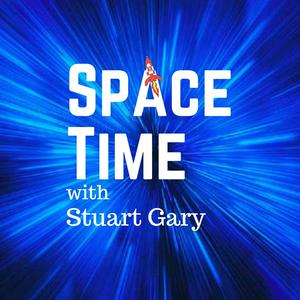
Get the free radio.net app
- Stations and podcasts to bookmark
- Stream via Wi-Fi or Bluetooth
- Supports Carplay & Android Auto
- Many other app features
Get the free radio.net app
- Stations and podcasts to bookmark
- Stream via Wi-Fi or Bluetooth
- Supports Carplay & Android Auto
- Many other app features


SpaceTime with Stuart Gary
Scan code,
download the app,
start listening.
download the app,
start listening.

